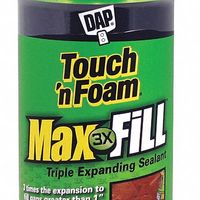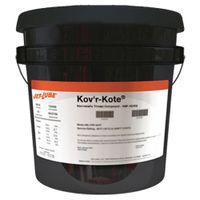Call +(254) 703 030 000 / 751 483 999 / 721 704 777
- Home
- Adhesives Sealants And Tape
- Caulks Sealants Gasket Makers
.....Read More
Frequently Asked Questions
What is the difference between caulk and sealant?
Caulk and sealant are both used to fill gaps and cracks, but they have different properties and applications. Caulk is typically a rigid material that dries hard and is best for sealing stationary joints where little movement is expected, such as around windows, door frames, and trim. It is often paintable and is good for general-purpose sealing indoors. Sealants, on the other hand, are more elastic and flexible, designed to withstand movement and expansion/contraction. They are ideal for areas with more dynamic joints, like in bathrooms, kitchens (around sinks and countertops), and for exterior applications where weather exposure and temperature fluctuations are a concern. Sealants offer better waterproofing and durability in high-stress areas. Common types of sealants include silicone, polyurethane, and latex sealants, each with specific strengths for various environments and materials.
How long does it take for caulk to dry?
The drying time for caulk varies significantly based on several factors, primarily the type of caulk, humidity levels, temperature, and the thickness of the applied bead. * **Acrylic Latex Caulk:** This is a common and fast-drying type. It typically forms a skin within 30 minutes to an hour and is usually paintable within 2 to 4 hours. For full curing, it can take 12 to 24 hours, though some formulations might require up to 72 hours, especially in cooler, more humid conditions.
* **Silicone Caulk:** Silicone caulk cures through exposure to moisture in the air. It usually skins over within 30 minutes to an hour. However, it takes much longer to fully cure, often between 24 and 48 hours for thinner beads. Thicker applications or high humidity can extend the curing time to several days, or even up to a week.
* **Polyurethane Caulk:** This type is known for its durability and flexibility. It typically skins within 2 to 6 hours but can take 3 to 7 days for a full cure. Low temperatures and high humidity will slow down its curing process.
* **Specialty Caulks:** Other types, like butyl or asphalt-based caulks, have their own specific drying and curing times, often detailed on the product packaging.**Factors Affecting Drying Time:** * **Humidity:** High humidity slows down the drying process for most caulks, especially silicone, which relies on moisture for curing.
* **Temperature:** Warmer temperatures generally accelerate drying and curing, while colder temperatures significantly slow them down. Most manufacturers specify an optimal temperature range for application and curing.
* **Bead Thickness:** Thicker beads of caulk will always take longer to dry and cure than thinner ones because moisture and air cannot penetrate as easily to the center.
* **Ventilation:** Good air circulation can help speed up the drying time, particularly for latex and silicone caulks.Always refer to the manufacturer's instructions on the caulk tube for the most accurate drying and curing times, as formulations can vary. It's crucial to allow sufficient time for the caulk to fully cure before exposing it to water or stress to ensure its longevity and performance.
Can you paint over sealant?
Please specify what topic you would like me to elaborate on.
What is the best caulk for bathrooms?
For bathrooms, silicone caulk is generally considered the best option. It offers superior water resistance, flexibility, and durability, making it ideal for wet environments. Unlike acrylic latex caulk, silicone caulk will not shrink, crack, or peel over time, and it's also resistant to mold and mildew growth, which is crucial in bathrooms. While it can be more challenging to apply and clean up than acrylic latex, its long-lasting performance makes it a worthwhile choice for sealing around tubs, showers, sinks, and backsplashes. For a durable, waterproof, and mold-resistant seal, 100% silicone caulk is highly recommended.
How do you remove old caulk or sealant?
Removing old caulk or sealant typically involves a few steps to ensure a clean surface for new application. First, you'll need to physically remove as much of the old material as possible. This can be done with a utility knife, a caulk removal tool, or a razor blade scraper. Carefully cut along the edges of the caulk bead and then peel or scrape it away. Be gentle to avoid damaging the surface underneath.
Once the bulk of the caulk is gone, there will likely be residues left behind. For silicone caulk, a silicone caulk remover can be effective. Apply it according to the product's instructions, let it sit for the recommended time, and then scrub away the softened residue with a stiff brush or abrasive pad. For latex or acrylic caulk, warm water and dish soap, or a caulk softener designed for those materials, can help.
After removing the residue, it's crucial to clean the surface thoroughly. Use a degreaser or rubbing alcohol to remove any remaining oils, dirt, or cleaning product residues. This step is vital to ensure proper adhesion of the new caulk. Finally, allow the surface to dry completely before applying fresh caulk.
What is the difference between a gasket maker and a gasket sealant?
A gasket maker and a gasket sealant both serve to create a seal, but they differ in their primary application and function. A gasket maker, also known as a form-in-place gasket, is a material applied directly to a surface to create a custom-fit gasket. It cures to form a durable, resilient seal that fills irregularities and provides a leak-proof barrier. Gasket makers are typically used in situations where a pre-cut gasket is unavailable or impractical, or when a very strong, permanent seal is required. Common types include RTV (Room Temperature Vulcanizing) silicone, anaerobic sealants, and polyurethane.
On the other hand, a gasket sealant is an additive applied to a pre-existing, solid gasket to enhance its sealing capabilities. It fills microscopic gaps and imperfections in the gasket material or between the gasket and mating surfaces, improving the overall seal and preventing leaks, especially in high-pressure or high-temperature environments. Gasket sealants can also help prevent gasket degradation or corrosion. They are often used to supplement traditional gaskets, providing an extra layer of protection. Examples include brush-on sealants, spray sealants, and pastes.
In essence, a gasket maker creates the gasket itself, while a gasket sealant enhances the performance of an existing gasket. Choosing between the two depends on the specific sealing requirements and the nature of the components being joined.
How do you apply spray foam sealant?
Applying spray foam sealant effectively requires proper preparation and technique. First, ensure the surface is clean, dry, and free of grease or loose debris. Wear appropriate personal protective equipment, including gloves, eye protection, and a respirator, as the fumes can be irritating.
For optimal adhesion and expansion, the foam should be applied within the recommended temperature range specified by the manufacturer, typically between 60-80°F (15-27°C). Shake the can vigorously for at least 30 seconds to mix the contents thoroughly.
Hold the can upside down and aim the nozzle at the gap or crack you intend to seal. Apply the foam in thin, even beads, as it will expand significantly upon curing. For larger gaps, it's better to apply multiple thin layers, allowing each layer to cure slightly before adding the next. Avoid overfilling, as excessive expansion can cause bulging or distortion.
After application, allow the foam to cure completely, which can take several hours depending on humidity and temperature. Once cured, any excess foam can be trimmed with a utility knife. Clean the nozzle immediately after use with a foam cleaner to prevent clogging. Always refer to the specific product instructions for detailed guidance, as formulations and application methods can vary between brands.
Can caulk be used on exterior surfaces?
Please provide a question for me to answer.
What is the best sealant for windows and doors?
The best sealant for windows and doors depends on the specific application and environmental conditions. Generally, silicone sealants are highly recommended for exterior use due to their excellent weather resistance, flexibility, and durability. They can withstand extreme temperatures, UV radiation, and moisture without cracking or shrinking. For interior applications, acrylic latex sealants are often preferred for their ease of application, paintability, and water clean-up. They are suitable for sealing gaps and cracks around window and door frames where movement is minimal.
Polyurethane sealants offer a good balance of flexibility and strength, making them suitable for both interior and exterior use, especially in areas with higher movement. However, they can be more challenging to work with and may require a primer for optimal adhesion. Hybrid sealants, which combine properties of different chemistries, are also gaining popularity for their versatility and enhanced performance characteristics.
When selecting a sealant, consider factors such as: * **Material compatibility:** Ensure the sealant adheres well to the window/door frame and surrounding building materials.
* **Movement capability:** Choose a sealant that can accommodate the expected expansion and contraction of the materials.
* **Environmental exposure:** Select a sealant resistant to UV, temperature fluctuations, and moisture.
* **Paintability:** If you plan to paint over the sealant, ensure it is paintable.
* **Curing time:** Consider how quickly the sealant cures and if it needs to be protected from rain or dust during this period.Always follow the manufacturer's instructions for application, surface preparation, and curing to ensure optimal performance and longevity of the seal.
How do you choose the right pipe sealant?
Choosing the right pipe sealant depends on several factors, including the type of pipes, the materials being joined, the pressure and temperature of the system, and the nature of the fluid being transported.
For metal pipes carrying water or air, PTFE (Teflon) tape is a common choice. It’s easy to apply, offers good chemical resistance, and can withstand a wide range of temperatures and pressures. Liquid pipe thread sealants, often referred to as "pipe dope," are also effective for metal pipes and can fill small gaps, preventing leaks. These are available in various formulations for specific applications, such as those resistant to gasoline or natural gas.
For plastic pipes, it's crucial to use sealants compatible with the plastic material (e.g., PVC, CPVC, or ABS). Special transition cements or sealants are often used when joining different types of pipe materials. It's important to avoid sealants that could degrade the plastic.
Consider the application's pressure and temperature requirements. Some sealants are designed for low-pressure systems, while others can withstand high pressures and extreme temperatures. Always check the product's specifications to ensure it meets the demands of your system.
Finally, consider the fluid being carried. If it's a harsh chemical, a sealant with strong chemical resistance is necessary. For potable water lines, ensure the sealant is NSF-approved for drinking water applications. Always follow the manufacturer's instructions for proper application to ensure a reliable, leak-free seal.




